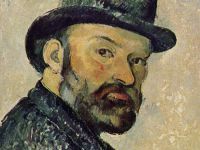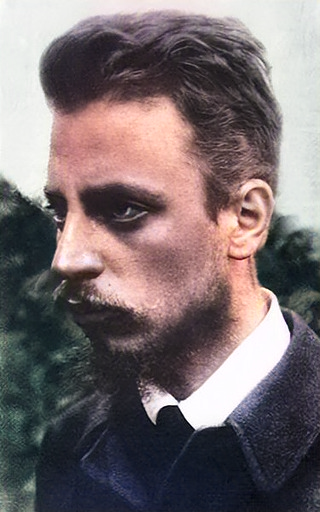
Rainer Maria Rilke (1875 – 1926)
On December 4, 1875, Bohemian-Austrian poet and novelist Rainer Maria Rilke was born. With his dingly poetry, completed in the New Poems and influenced by the visual arts, he is considered one of the most important poets of literary modernism. From Rilke’s work there are several stories, a novel and essays on art and culture as well as numerous translations of literature and poetry. His extensive correspondence is considered an important part of his literary work.
“You who never arrived
in my arms, Beloved, who were lost
from the start,
I don’t even know what songs
would please you. I have given up trying
to recognize you in the surging wave of the next
moment.”
– Rainer Maria Rilke, You Who Never Arrived (as translated by Stephen Mitchell) (1913-1914)
An Unhappy Childhood
Rilke was born as René Karl Wilhelm Johann Josef Maria Rilke in Prague, Bohemia, by the time part of Austria-Hungary. He was the second child of Josef Rilke (1839-1906) and Sophie (“Phia”) Rilke, who came from a wealthy family of Prague factory owners. Rilke’s childhood in Prague is not considered happy. His father did not succeed in the military career he aspired to, instead he became a railroad official. The mother did not see her hopes for a noble life in marriage fulfilled. Nor did she cope with the early death of her older daughter, born prematurely after a week in 1874. She tied her only son René – French for “the born-again” – to herself and pushed him into the role of the deceased sister. The relationship between mother and son was overshadowed by this.
Education
In 1884 the marriage of the parents broke up and they lived separately from then on without divorce. René was raised alone by his mother for a short time before his parents sent him to the cadet school in St. Pölten. After six years he broke off his military training due to illness. This was followed by a visit to the Commercial Academy in Linz, Upper Austria. In May 1892, he had to leave Linz because of a love affair with a nanny who was several years older than him. Thus, after the military career, an economic career had become hopeless as well. Back in Prague, Rilke prepared himself from 1892 to 1895 in private lessons for the Matura, which he passed in 1895. In the same year he began to study literature, art history and philosophy at the Charles University in his native city. In the following year, he switched to law and continued his studies at the Ludwig-Maximilians-Universität in Munich from September 1896.
Lou Andreas-Salomé
In March 1897 Rilke visited Venice for the first time. On May 12, 1897 he met the widely travelled intellectual and literary figure Lou Andreas-Salomé in Munich and fell in love with her. He also changed his first name from René to Rainer, because Andreas-Salomé found the name more appropriate for a male writer. The following intensive relationship with the older and married woman lasted until 1900. Even after the separation, until the end of Rilke’s life, Lou Andreas-Salomé proved to be his most important friend and advisor. In the fall of 1900, immediately after Andreas-Salomé had decided to part with him, Rilke stayed in Worpswede for an extended visit with Heinrich Vogeler. Vogeler organized Sunday meetings in the White Hall of his Barkenhoff, where the visual artists Otto Modersohn and his wife Paula Modersohn-Becker, the writer Carl Hauptmann and the sculptor Clara Westhoff met. Westhoff and Rilke got married the following spring.

Lou Andreas-Salomé, c. 1897
Paris
In the summer of 1902, Rilke gave up the shared apartment and traveled to Paris to write a monograph on the sculptor Auguste Rodin.[1] The first period in Paris was difficult for Rilke, because the foreign city held many horrors for him. He later shaped these experiences in the first part of his only novel, The Notebooks of Malte Laurids Brigge. At the same time, however, his encounter with modernity brought him many ideas: Rilke first dealt intensively with the sculptures of Auguste Rodin, then with the work of the painter Paul Cézanne.[2]
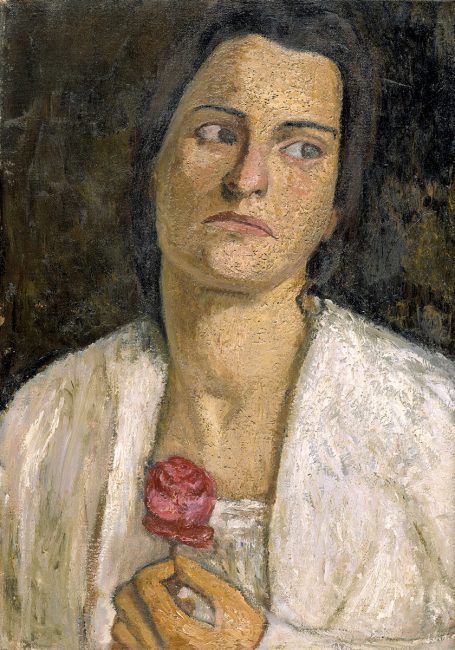
Clara Rilke-Westhoff, portrait by Paula Modersohn-Becker, 1905
Inner and Outer Change
“Surely all art is the result of one’s having been in danger, of having gone through an experience all the way to the end, where no one can go any further.”
– Rainer Maria Rilke, Letter to his wife (June 24, 1907)
After completing The Notebooks of Malte Laurids Brigge in Leipzig in 1910, Rilke began a deep creative crisis that lasted twelve years. He worked on translations of literary works from French. In his search for new inspiration, he studied classical writers, and for the first time also more intensively with the works of Goethe and Shakespeare. In 1912 he began the Duino Elegies, which he could only complete in February 1922. In 1912 a new edition of the lyrical story Die Weise von Liebe und Tod des Cornets Christoph Rilke (The way of love and death of the cornet Christoph Rilke) was published as the number one of the Insel-Bücherei series, with which the work was to achieve high print runs and unusual popularity, after it had been published quite unsuccessfully as a collector’s edition by Rilke’s first publisher, Axel Juncker, in 1906.
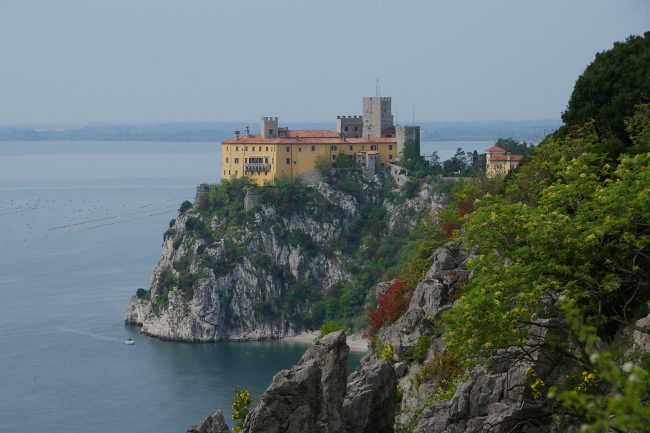
Rilke began writing the first and second elegies at Duino Castle, near Trieste, Italy, after hearing a voice in the wind while walking along the cliffs. photo: Aconcagua, CC BY-SA 3.0, via Wikimedia Commons
World War One
The outbreak of the First World War surprised Rilke during a stay in Germany. He was unable to return to Paris; his property left there was confiscated and auctioned. Rilke spent most of the wartime in Munich. In early 1916, Rilke was drafted and had to complete basic military training in Vienna. Through the intercession of influential friends, he was sent to work in the war archives and the Imperial and Royal Archives. Kriegspressequartier and released from military service on June 9, 1916. The traumatic experience of military service, also perceived as a repetition of the horrors experienced during his military school days, almost completely silenced Rilke as a poet for a time.
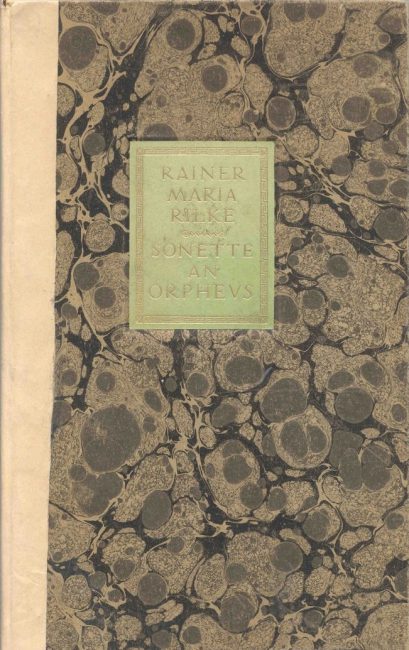
Front cover of Rilke’s ‘Sonnets to Orpheus’, 1923
Switzerland
On June 11, 1919, Rilke traveled from Munich to Switzerland. The external reason was an invitation to lecture from Zurich, but the real reason was the desire to escape the postwar confusion and resume the work on the Duino Elegies, which had been interrupted for so long. In Zurich, he met Nanny Wunderly-Volkart (1878-1962), a generous patron of the arts, who not only supported him financially from 1919 until his death, but also provided Rilke with pleasant places to stay with the desired service. Rilke lived in Soglio, Locarno and Berg am Irchel, among others. Only in the summer of 1921 did he find a permanent home in the Château de Muzot, a small castle above Sierre in the canton of Valais. During an intensive period of work, Rilke completed the Duino Elegies here within a few weeks in February 1922. The two parts of the cycle of poems, Sonettes to Orpheus, were also written in the immediate vicinity. Both poems are among the highlights of Rilke’s work.
Final Years
Since 1923, Rilke had to struggle with serious health problems, which made several long stays in sanatoriums necessary. The stay in Paris from January to August 1925 was also an attempt to escape the illness by changing location and living conditions. Shortly before Rilke’s death, his illness was diagnosed as leukemia, in a form that was still little known at the time. The poet died on December 29, 1926 in the Valmont sur Territet sanatorium near Montreux and was buried on January 2, 1927 – in accordance with his wishes – near his last residence in the mountain cemetery of Raron (Switzerland).
Rilke’s Poetry
In his later work (1912-1922), Rilke gives poetic form to his affirmation of life in the cycles Duino Elegies and Sonmetes to Orpheus and refers to the whole of life and death. The poems of recent years fall into different groups: on the one hand, cheerful, relaxed, often laconically pointed nature and landscape poems, on the other hand, poetically bold experiments that are worked out purely from language.
Gregory B. Sadler, Rainer Maria Rilke | The Notebooks of Malte Laurids Brigge | Existentialist Philosophy & Literature, [10]
References and Further Reading:
- [1] Auguste Rodin – Progenitor of Modern Sculpture, SciHi Blog
- [2] Paul Cézanne – Breaking all the Rules, SciHi Blog
- [3] Rainer Maria Rilke | The Notebooks of Malte Laurids Brigge | Existentialist Philosophy & Literature at youtube
- [4] Works of Rainer Maria Rilke at Gutenberg-DE
- [5] Works by or about Rainer Maria Rilke at Internet Archive
- [6] Rainer Maria Rilke, Profile at Poets.org
- [7] International Rilke Society
- [8] Rainer Maria Rilke: Letters to a Young Poet, The first letter.
- [9] Rainer Maria Rilke at Wikidata
- [10] Gregory B. Sadler, Rainer Maria Rilke | The Notebooks of Malte Laurids Brigge | Existentialist Philosophy & Literature, Gregory B. Sadler @ youtube
- [11] Biography: Rainer Maria Rilke 1875–1926, Poetry Foundation website
- [12] Freedman, Ralph (1998). Life of a Poet: Rainer Maria Rilke. New York: Northwestern University Press.
- [13] Rilke, Rainer Maria (1920). Erste Gedichte. Leipzig: Insel.
- [14] Ralph M. Köhnen: Rilke, Rainer Maria. In: Neue Deutsche Biographie (NDB). Band 21, Duncker & Humblot, Berlin 2003, S. 621–623 (Digitalisat).
- [15] Timeline of Rainer Maria Rilke, via Wikidata




